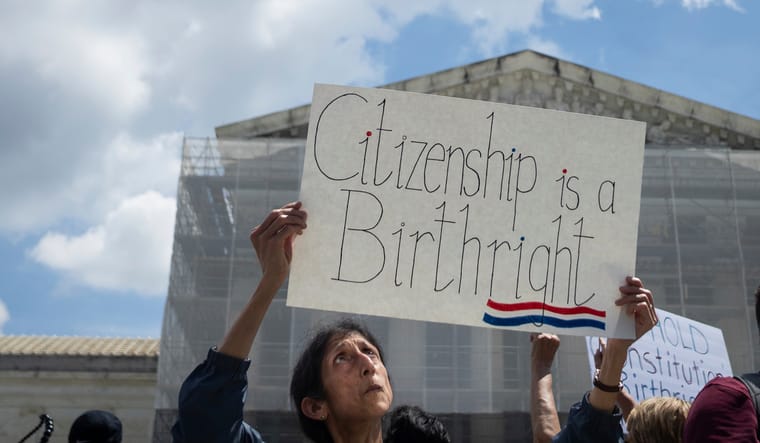Are You Grieving the End of a Marriage, a Job, a Friendship? Your Pain Has a Name and We're Not Taught How to Deal With It
It was an ordinary Tuesday morning when I opened my husband’s laptop; mine wasn’t working, and I was desperate to print something. Seconds after that mundane act, my world dropped out from underneath me. I discovered that my husband of 18 years, the father of my three children, and the man I had adored for more than 20 years was not the loyal and crazy-in-love-with-me man I believed him to be.
Had my morning work call not been canceled, or had I opened his laptop a minute later, I would have missed the “ping” of the email notification that appeared in the corner of the screen. The message confirmed my husband’s renewed subscription to an online dating website. Opening that single email revealed countless others; some shocked me with the use of affectionate pet names and order confirmations for romantic gifts that I had not received. Others confused me with details that contradicted my reality; travel confirmations revealed secret trips, and time stamps verified that my own proximity hadn’t impacted planning.
One after the next, each message stunned me with new facts. The laptop of horrors continued to confess one horrific secret after another: he had been unfaithful for many years with many (many!) women. I was eviscerated by the sudden bend in reality; my marriage, my husband, my life weren’t what I thought they were. My body tingled and panic spread to every cell, in a deep knowing that something was very wrong, that I was not safe.
My old life was instantly gone, but I didn’t know that immediately. It was not until the shock wore off and after a few sessions of couples’ therapy that it became clear I was not married to the man I had promised my heart to nearly two decades before. He had become someone else, and somehow, I never noticed. Or maybe this is who he had been all along, and I had just been unaware of that truth.
We divorced shortly after. The trauma of making this discovery and the subsequent unraveling of my once-happy life left me in pieces. As I tried to make sense of losing my husband and the beautiful life we had built as a team, I came face to face with grief.
I soon learned I had been especially naïve about grief. I had expected that when it came, I would go through the five stages theorized by psychiatrist Elisabeth Kübler-Ross—denial, anger, bargaining, depression, and acceptance—in a neat, linear way and be done with it.
Instead, my grief turned out to be messy and so much more complicated. To my surprise, the stages came and went as they pleased, in no sequential order. At some point in the day, I would feel acceptance, only to have that peace ripped away by anger. The following day would look the same, or would unleash depression, then denial, and then shift back to anger. But perhaps more importantly, my grief would cycle through a stage the Kübler-Ross model didn’t account for, the first sign my grief was different than that experienced when a loved one dies.
In time, I would learn that grieving the loss of a loved one who is still living—a partner to betrayal, a child to addiction, a parent to a degenerative disease—isn’t the same as grieving the loss of a loved one to death. We don’t hold a funeral or offer an affectionate eulogy in order to engage with our grief in a healthy way. Grieving the loss of someone still living is also not quite the same as the grief experienced by those coping with what therapist Pauline Boss first coined as ambiguous loss: when a loved one goes missing or their death can’t be definitively confirmed (e.g., when a soldier dies in a war but the body is never recovered). Later, that definition was expanded to include a psychological absence with physical presence.
For example, ambiguous loss occurs with Alzheimer’s disease, traumatic brain injury, or other chronic mental health illnesses that can take away a loved one’s mind or memory. It may also result from, as Boss defines it, “obsessions or preoccupations with losses that never make sense, e.g., suicides or infant deaths.”
Yet this still wasn’t quite a fit for me, since it is one thing to hope that someone presumed dead might not actually be and will return to us, and quite another to hope our loved ones who are definitely alive (sometimes living in the same house or a few miles away!) will return as they once were. For me, even Dr. Boss’s impressive body of work didn’t speak to my specific experience or describe the grief process I was seeking. While my loss wasn’t ambiguous, my grief was.
My curiosity and desire to understand how to cope eventually led me to find myself along the way. (Of course, that wasn’t done in the express lane, and it certainly didn’t happen because I’m a highly evolved individual who found forgiveness and never thought of my old life again, amen. Not even close.) I was determined to find anything that would heal my wounds and lead me to recovery. My exploration into the depths of ambiguous grief has revealed many truths.
My intention is to offer proactive insights to help those navigating ambiguous grief and suffering the painful loss of a loved one still living. I hope wherever you may be in your grief—be it from a painful discovery like mine, a divorce or end to a relationship, a life-changing medical diagnosis, a broken relationship with an addicted child, or something else—that a flicker of hope is sparked in you, letting you know that despite society often not recognizing the depth of your loss, your grief is real, your struggle is valid, and healing is possible. If you are willing to put in the work, if you are eager and ready to find a way out of your grief—but don’t know where to begin—here’s a start.
Hold a faux-u-neral. Without a standard model to ritualize and recognize the death of your relationship, you may feel unvalidated in your grief. Reconcile your reality with a ceremony or ritual that is meaningful to you. Doing so can help you honor your ending by providing an opportunity for your grief to be witnessed by others and be an expression of the love you have for the relationship that has changed or died.
Envision your life ahead. Dedicate a few minutes each day to closing your eyes and envisioning your desired future. Be sure that you are the focus of the experience, and don’t get too bogged down in the details. (On a beach laughing in the sun is detail enough). Once you have the vision in your mind’s eye, tap into how it feels and allow that feeling to wash over you, working up to a minute, if possible.
Hone your intuition. The deep part of yourself that guides you throughout life, acting like your own internal GPS, will warn or affirm you and is often felt in the gut. The more you check in with yourself and follow your intuition’s signals, the more you’ll grow in trust with this part of yourself. Practice tuning in to your intuition by getting quiet with daily “gut checks,” and learn to find other ways your intuition signals you to pay attention.
Find your people—and lean on them. Seek out people who understand your loss and are working through their own grief as well. More important than parallel grief timelines is your shared activating event. As the nuances of loss vary depending on the nature of the loss, finding others who can relate is key. Your people are especially valuable early on, acting like a “Special Ops” team; you can help one another with the difficult onset and most trying times.
Pay attention to what is healing for you during the many stages of your grief. Art, birding, books, exercise, gardening, knitting, learning, meditation, music, reading, religious studies, outdoor activities, podcasts, puzzles, scrapbooking, traveling, and writing are just a few soul salve remedies.
Navigating the gnarled nuances of ambiguous grief is a challenging experience, so having the right tools throughout the process is an important component of your healing. While these are some of my favorites and can be used at various points along your path, this is not an exhaustive list. Be mindful of what other tools you find helpful and add them to this list.
Excerpted from Soulbroken by Stephanie Sarazin. Copyright © 2022 by Stephanie Sarazin. Reprinted with permission of Balance Publishing. All rights reserved.
Stephanie Sarazin is a writer, researcher, and experiential expert in ambiguous grief. She is the founder of RiseUpRooted, an online resource center for those navigating ambiguous grief, a grief educator, and a TEDx curator in her community. She is an avid reader and a recreational runner, and lives in North Carolina, where she is currently training to hike to Mt. Everest’s Base Camp.
Question from the editor: Have you ever faced ambiguous grief in your life? If so, how was it different than grief you felt after someone you loved passed away? We'd love to hear your thoughts in the comments section below.
Please note that we may receive affiliate commissions from the sales of linked products.



